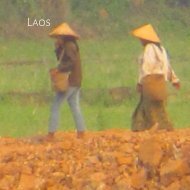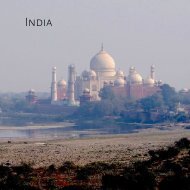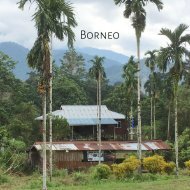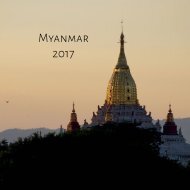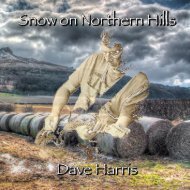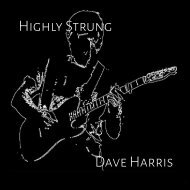Cambodia
Create successful ePaper yourself
Turn your PDF publications into a flip-book with our unique Google optimized e-Paper software.
<strong>Cambodia</strong>
Siem Reap<br />
Priha Vihear<br />
Lake Ton Le sep<br />
Battambang<br />
Phnom Penh<br />
Kampot<br />
Kep<br />
Sihanoukville
Angkor
Angkor is an archaeological site stretching<br />
over 248 square miles and contains the<br />
remains of the Khmer Empire dating from<br />
the 9th to the 14th century.<br />
The site is the largest religious monument in<br />
the world and there are over 1000 temples,<br />
ranging in scale from piles of brick rubble<br />
scattered through rice fields to the most<br />
famous, Angkor Wat
Angkor is thought to have been<br />
been the largest pre-industrial<br />
city in the world, with an<br />
elaborate infrastructure<br />
connecting an urban sprawl of<br />
almost 400 sq miles and the<br />
Angkor area may have supported<br />
up to one million people. [6
Bayon
Royal Enclosure
Type to enter text<br />
Type to enter text
Ta Keo
Ta Prohm
Ta Prohm is perhaps the most<br />
atmospheric and must see sites of the<br />
whole complex. Built in the 12th<br />
century, it was engulfed by the<br />
jungle for centuries and is now<br />
being trimmed and propped up by<br />
archaeologists and engineers. The<br />
site was made famous by the Tomb<br />
Raider movie and is perhaps the most<br />
reminiscent of how the whole<br />
complex would have looked lost in<br />
the jungle for centuries.
Angkor Wat
Angkor Wat is the most famous<br />
temple and often thought as<br />
the generic term for the whole<br />
site. built for King Suryavarman<br />
II in the early 12th century as<br />
his state temple and capital city,<br />
dedicated to the Hindu god<br />
it was converted into a<br />
Buddhist temple in the 14th<br />
century.
Siem Reap
Siem Reap is the town which<br />
services visitors to Angkor Wat.<br />
The name allegedly means "Defeat<br />
of Siam" and refers to an old<br />
conflict between the Siamese and<br />
Khmer kingdoms. There is an old<br />
French quarter and the town is<br />
growing rapidly to host the many<br />
visitors who congregate around<br />
Pub street.
Priha Vihear
Priha Vihear is an ancient Hindu<br />
temple started in the tenth century<br />
1,722 ft up in the mountains bordering<br />
<strong>Cambodia</strong> and Thailand. After years of<br />
civil war, the ownership was<br />
confirmed in 1962 by ICJ in favour of<br />
<strong>Cambodia</strong>. However, conflict between<br />
Thailand and <strong>Cambodia</strong> continued as<br />
late as 2008 and only in 2015 was the<br />
site finally considered safe to visit.
Getting to Priha Vihear was an adventure in itself. The<br />
guide books describe it as a 'must see mountain temple'<br />
but it was equally intriguing to see somewhere really<br />
off the beaten track. We left Siem Reap at 8 am in a very<br />
full minibus. Most of the passengers were going to<br />
Laos but we were dropped off in Krong Preah Vihear<br />
town. The minibus stopped at a street corner in the<br />
centre of town and the driver phoned for a taxi to<br />
take us to our hotel in Sra'em . This was not actually<br />
in town but 25 miles away. Then we booked another<br />
driver to take us the further 12 miles to the temple.<br />
Next we take 2 Moto taxis up a 40 degree road, which<br />
started as a good tarmac surface until halfway up the<br />
escarpment it reduced to a dirt track. Clinging on to<br />
the back of the bike I try not to look down the steep<br />
hillside and focus on staying on the bike. The moped<br />
struggles to carry our combined weight and bounces<br />
jarringly to a stop at the base of the temple.
Lake Tonle Sep
Kamphong Khleang
Kamphong Khleang lies on a river<br />
leading into Lake Tonle Sep but the<br />
river disappears as the lake rises<br />
and floods the area leaving many<br />
of the houses standing above the<br />
lake water.<br />
We stopped at a homestay for lunch<br />
before boarding a long tail boat to<br />
go out on the lake.
Lake Tonle Sep
Lake Tonle Sep is the largest fresh water<br />
lake in South east Asia, formed in a<br />
depression on the lower Mekong<br />
floodplain.<br />
The size and depth fluctuates dramatically<br />
over the year as the Mekong bulges with the<br />
runoff from the monsoon season. The<br />
deluge is so great that the Tonle river<br />
reverses direction and flows back into the<br />
lake causing it to expand from an area of<br />
1000 to 6000 Sq miles.
Battambang
Although Battambang seems like a<br />
sleepy provincial town, it is<br />
<strong>Cambodia</strong>'s second largest city and its<br />
a curious mix of Khmer , French<br />
colonial and modern architecture.<br />
There's is a lot to see in the<br />
surrounding countryside is ideal for<br />
excursions.
In 1795 Siam annexed much of<br />
north western <strong>Cambodia</strong><br />
including Battambang and Siem<br />
Reap. In 1907 the province was<br />
ceded to the French to be<br />
reunited with <strong>Cambodia</strong> as part<br />
of the French Colony of<br />
Indochina.
Bamboo Train
A network of railway lines was established<br />
by the French to haul heavy goods between<br />
Battambang and Poipet. Most of the lines<br />
were shut down by Khmer Rouge but one<br />
line remained in operation, mainly to<br />
generate income from curious tourists.<br />
It was a fun ride through the fields on a<br />
bamboo platform propelled by motorbike<br />
engines. when 2 opposing carriages meet, the<br />
one with fewer passengers must be derailed<br />
then re- assembled to proceed.<br />
Now the old Line has been rebuilt and<br />
reports seem generally disappointing.
Killing Fields at Wat Samrong Knong
Wat Samrong Knong was used by the<br />
Khmer Rouge to imprison and torture<br />
it's victims. Thousands were killed.<br />
Only the Guide's story now shows the<br />
atrocities committed here except for one<br />
monument housing the skulls of the<br />
dead, built from donation from<br />
<strong>Cambodia</strong>ns who managed to flee<br />
abroad. A very disquieting experience,
Wat Ek Phnom
Phnom Sampeau
Another Angkorian temple and another<br />
Memorial to the Killing fields. The old temple is<br />
built on an a rocky outcrop and offers fabulous<br />
view across the plains below.
The killing fields memorials<br />
are poignant in their<br />
simplicity. At Phnom Sampeau,<br />
the horrific brutality is<br />
portrayed in grim statutary<br />
and the various forms of<br />
torture graphically
Phnom Penh
<strong>Cambodia</strong>’s capital sits at the junction of<br />
the Mekong and Tonlé Sap rivers.<br />
It was a hub for the Khmer Empire and<br />
the French.<br />
There is a long river front promenade,<br />
lined with parks, restaurants and bars.
Kampot
Kampot is a charming, slightly decayed<br />
French colonial town on the banks of<br />
the Preaek Tuek Chhu river. There are<br />
plenty of signs of regrowth and an<br />
increasing number of visitors. It's very<br />
easy to relax and enjoy the cafes and<br />
bars and a stroll along the riverside<br />
promenade , to see the lovely sunset<br />
over the mountains.
Bokor
Bokor was built by the French in the<br />
1920s as a Hill station but abandoned in<br />
the 1940s as fighting grew in the area.<br />
Now the empty shells of the Hotel and<br />
Church remain but a modern<br />
development program has started to<br />
rebuild the town.
Preaek Tuek Chhu river
La Plantation, Kampot
Kep
Kep provence borders on Vietnam and<br />
faces in to the Gulf of thailand.<br />
Established in 1908 Kep was a thriving<br />
resort town for the French and<br />
<strong>Cambodia</strong>n elite even until the early<br />
1970s. The former king kept a villa here.<br />
Now many of the colonial villas stand<br />
derelict, but like so many places in<br />
<strong>Cambodia</strong> , tourism is regenerating the<br />
town.
Otres Beach, Sihanoukville
<strong>Cambodia</strong><br />
2017






